First Look: Fuji's Rakan LT Adds Travel, Keeps Weird Suspension
Fuji has expanded their Rakan range for 2021, with a big bump up to 150mm of coil-sprung rear-wheel-travel, a 160mm fork, and a 63.7-degree head angle that puts it in a different category than the 120mm version. The short-travel Raken is still in their catalog if you don't need that much bike, but it's the Rakan LT that's ready for more speed and more sending.
The Rakan LT comes in two flavors; $2,799 USD gets you a RockShox Yari RC fork and Super Deluxe Coil Select shock, and a Deore 11-speed drivetrain, while $3,999 USD will get you a ZEB Select+, Super Deluxe Coil Select+, and GX Eagle 12-speed gearing on the same aluminum frame.
The Rakan LT comes in two flavors; $2,799 USD gets you a RockShox Yari RC fork and Super Deluxe Coil Select shock, and a Deore 11-speed drivetrain, while $3,999 USD will get you a ZEB Select+, Super Deluxe Coil Select+, and GX Eagle 12-speed gearing on the same aluminum frame.
Rakan LT Details
• Travel: 150mm rear / 160mm front
• Wheel size: 29"
• MLink suspension
• Aluminum frame
• Threaded bottom bracket
• Metric shock sizing
• MSRP: $2,799 / $3,999 USD
• www.fujibikes.com
• Travel: 150mm rear / 160mm front
• Wheel size: 29"
• MLink suspension
• Aluminum frame
• Threaded bottom bracket
• Metric shock sizing
• MSRP: $2,799 / $3,999 USD
• www.fujibikes.com
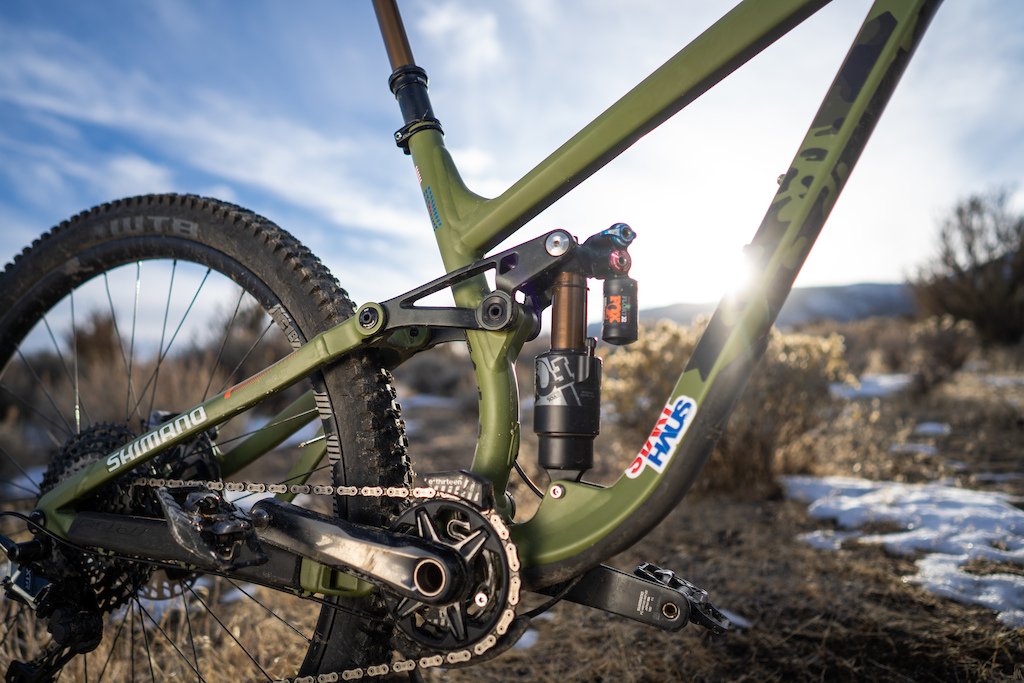
The new Rakan LT sports 150mm of travel, and there's a pivot nearly hidden in the middle of the bike's chainstays.
MLink Rear Suspension
The Rakan LT's press release is full of words telling us how efficient the bike's rear-suspension layout is and, having ridden a few different variations of their MLink system, I don't doubt those claims. Okay, cool, but why is there a pivot in the middle of the chainstays? MLink is short for Mid Link, and Fuji has said in the past that it provides less binding, less flex, and reduced pivot stress than experienced in more common suspension designs.
''Because it is a longer link than a typical short link system would use, it requires less rotation from the chainstay pivot," Luke Beal (the MLink's designer) explained of the original Rakan's MLink system that the new version evolved from. ''That is a simplification, but it gets the idea across. Just because it doesn’t rotate a lot doesn’t mean it doesn’t have an impact on the performance of the system.''
Geometry
You'll find the Rakan name on two bikes in Fuji's catalog, one being a 120mm trail rig and the other being the 150mm Rakan LT shown here. As you can imagine, they have very dissimilar geometry. Upfront, the LT gets a 63.7-degree head angle and a roomy 490mm reach on a large-sized bike. That drops down to 470mm on a medium and 450mm on a small, while the seat tube angle is as steep as 77.5-degrees on the small. The medium and large sizes sit a bit slacker at 76.5-degrees.
It's worth mentioning that the new Rakan LT seems to sit awfully close to Fuji's other big-hitter, the Auric LT that sports a 170mm fork and 160mm of rear-wheel-travel. It has a 63.5-degree head angle, and the reach numbers match those used for the Rakan LT. The frame looks quite similar, too.
The Rakan 29 LT 1.1 (left) costs $3,999 USD, while the LT 1.5 goes for $2,799 USD. Both are built around the same 150mm-travel aluminum frame.
Author Info:
Must Read This Week
Sign Up for the Pinkbike Newsletter - All the Biggest, Most Interesting Stories in your Inbox
PB Newsletter Signup
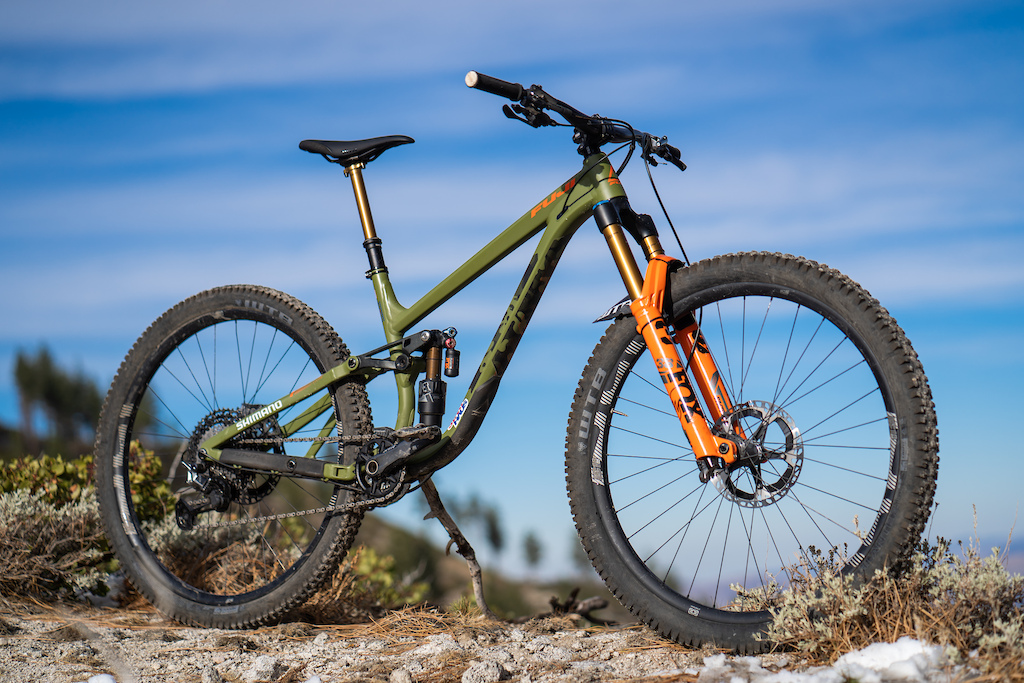
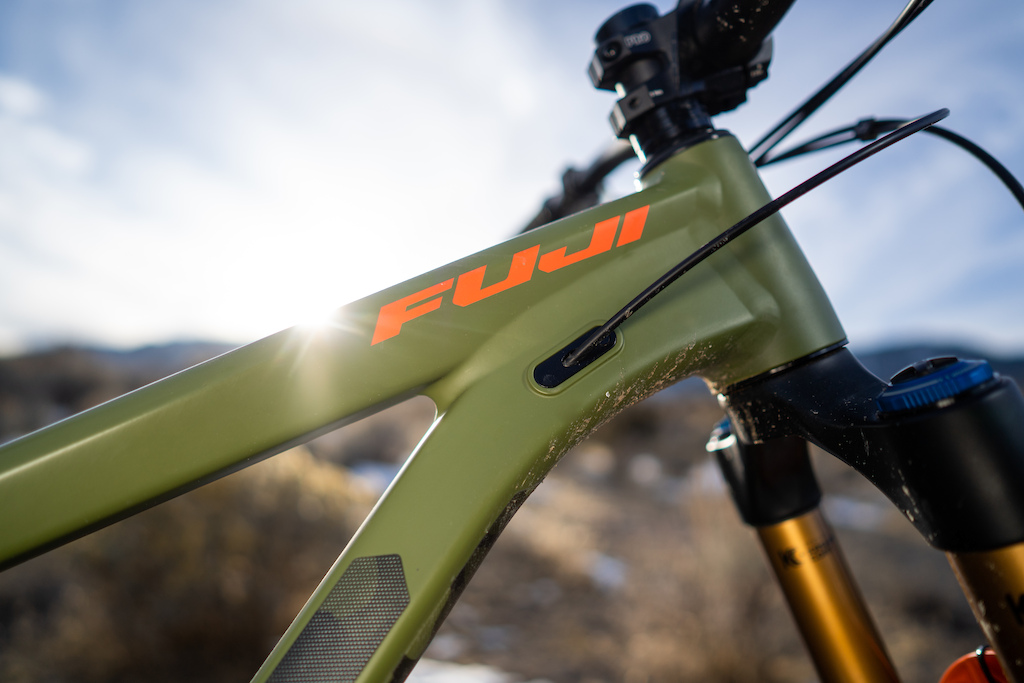


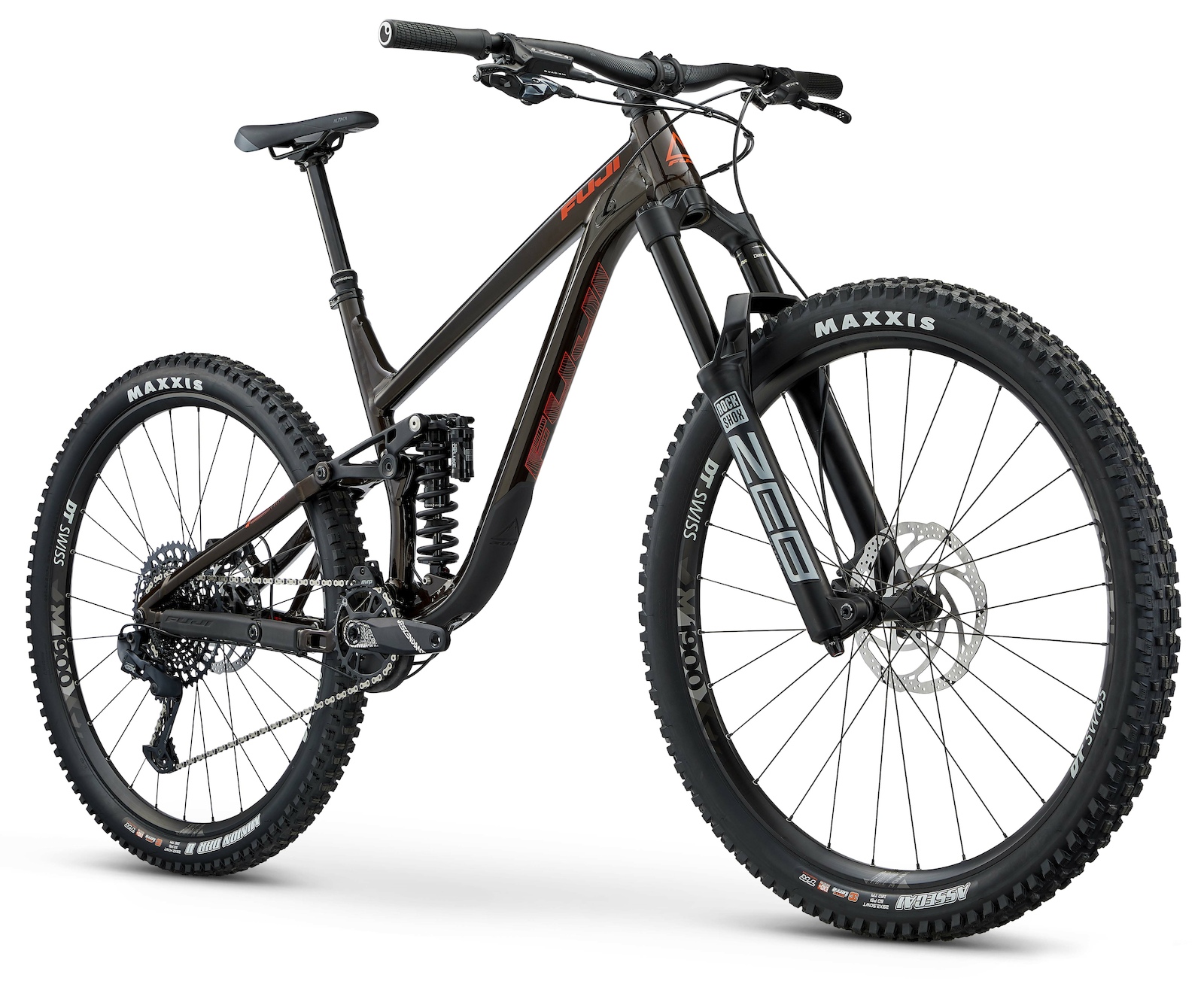
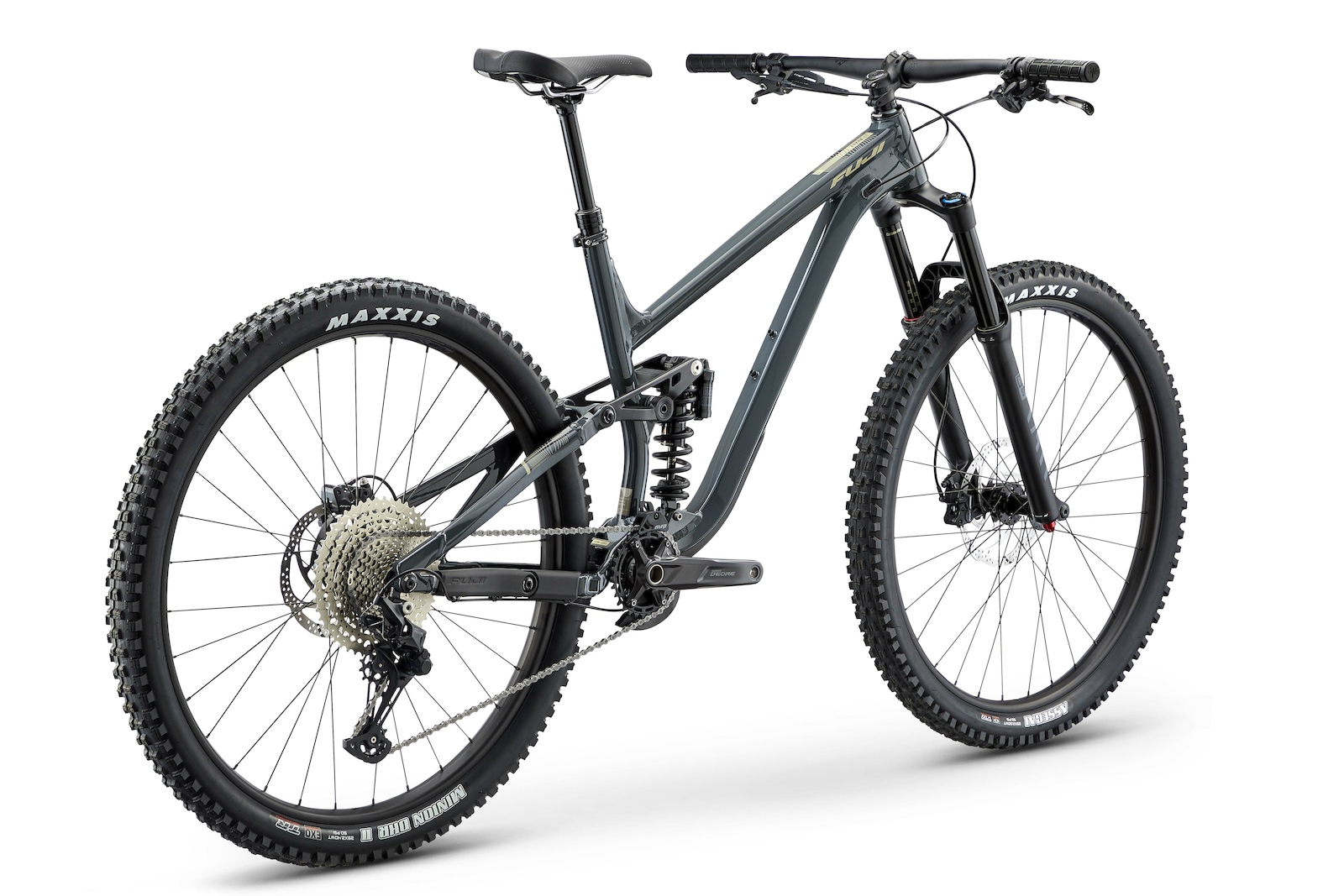

Once I solved those issues and started putting miles on the thing, I genuinely like how it rides and handles and it's been completely problem-free (outside of the BB bearing life). But it's going to take one hell of a bike for me to ever buy a Fuji again.
www.pinkbike.com/news/lauren-gregg-getting-to-know-interview-2016.html
Maybe not the best value components wise (compared to mostly DTC bikes admittedly), altho that has improved a bit for this year's lineup.
The frame is well built especially the pivot, that connects the seat stays with the swing arm. I've seen some brands skimp in places like these. I can't find a spare derailleur hanger for it online tho, which kinda sucks.
Well, scratch that off of the list of “Things I never thought I’d see.”
Other than one is a 29er and the other is 27.5...
#pickawheelsize andbeadickaboutit
I remember around 2011 when I bought a Norco the vibe in the US was ‘Norco is an Asian-made value brand like Fuji’.
Bet the choice to retain that suspension design might simply be a monument to one single entrenched executive's ego.
All I'm hearing is a bunch of people that are scared to try something new. The new Enduro has a pretty radical linkage but it's wildly popular because of the big S on the head tube.
That being said, they claim the Stumpy Evo has a similar leverage curve without the 6 bar.
Thanks for being willing to slog it out with trolls and haters in the PB comments section without blatantly pointing out that you work for Fuji/ASI, while we are doomed to spending countless hours hunched over our patients' stinking mouths, all so we can afford a single S-Works.
You could always pick up a Rakan LT instead of an S-Works and cut out of work to go ride some more
the location of the pivot has a f*ckton to do with how much flex is induced. each member of the rear triangle is a lever acting on it's pivots. The longer a lever is, the more leverage(duh) it has over the pivot. This is why something like a VPP link is so stout. it has a very tiny lever between the two pivot points.
Do you have something like that you could share here, for those of us who are genuninely interested and open to new ideas?
youtu.be/Qb6JUx1IiLA
The rockers driving the shock may look different but don't change the suspension layout. They're just there to get the desired combo of shock placement, centre of gravity, bottle space, dropper space and leverage ratio. Still a Horst Link though.
@hamncheez What 6 bar? The current Enduro is a 4 bar Horst Link frame. Let's not confuse shock driving linkage with a 6th "bar" in terms of suspension movement. By that logic any linkage driven single pivot a'la Kona would be "4 bar" (it's not).
1. Linkage driven single pivots are called 4 bar.
2. Knolly, Canyon (Strive), and the Enduro are called 6 bar because there are six bars.
Your analysis of pivots , VPP, etc is also way off base.
That's exactly my point, it looks radical but it's not. Just like the fuji.
Besides that, your engineering is way off. This design has very little in common with VPP. Your analysis of pivot locations also does not reflect generally understood engineering principles.
Not sure how long you've been riding, but "URT" has bad connotations. The design sucks...maybe ok for a hybrid or city bike, but you basically cancel out the suspension the moment you stand up.
I get what you are referring to...but I think dual link is a better term for VPP. DW-link, Maestro, etc where the where is a solid triangle connected to the front triangle by a pair of short(ish) links, one of which also drives the shock.
PS - visited Portugal in 2019 and it was amazing...I want to rider there badly...
Fuji releases good looking, affordable bike with no bs spec and geo: Eww, suspension looks weird, you moved the horst link to the wrong place and your older bikes sucked!
Btw, nothing weird at all on this design, just another trusted 4 bar linkage with an inbetween pivot location on the lower link. Nuffin wrong with that. Most of you are just marketing muppets. Njoy your carbon s-works. God, I am a bit bitter today, aren‘t I...
You just f*cking answered that a sentence before. You agreed with their claims of efficiency and such, and that's why the pivot is where it is, to hit those claims.
Every suspension design is different, why is this one "weirder" than any other one? You guys bitch about bikes that look too similar to each other, then bitch about slightly different bikes being "weird". So stupid.
"Every suspension design is different, why is this one "weirder" than any other one? You guys bitch about bikes that look too similar to each other, then bitch about slightly different bikes being "weird". So stupid." Touche. It's something fun to do when I can't ride my bike.
So the pivot is in a different place, but it rides great and does what they say it should? The who f*cking cares where the pivot is? It's a non-issue, a waste of words talking about it. Tell us more about how the suspension actually matches the press release claims, that's the important part.
"Is there only one of the thing? Then different is great! Is it being successfully mass produced? Then different is the worst!"
It's like here's a picture of the recently escaped prisoner, he's highly dangerous- but his face is blurred out on the wanted poster.
Two other things. Pity they can do a nice green one-off pro frame and just black/grey for us joes. LOL they put coils on the 150mm sale bikes and an air shock on the pro bike - there’s a turn about right there!
Are we sure this doesn't translate to "we are trying to be different to be different"? Never ridden an MLink bike personally but I'm curious if anyone has to compare to others with a pivot near or at the rear axle?
(If it helps, zoom in on the middle of the chainstay. There's a pivot there, and there's also a tube connecting the seatstay to the chainstay on the non-driveside of the bike).
Also, did you know that Vanilla is the most popular flavor of ice cream? Crazy, huh.
I see what you did there Vanilla=Popular and Fuji=Unpopular. I think there is a difference between plentiful and popular. Given a wide variety of compelling flavors I'm certain the popular flavor would not be vanilla, problem is often times other flavors are not available, too expensive, or are not a good option for additional toppings hence vanilla get purchased the most because it's cheap, plentiful, and versatile. That seems to describe Fuji pretty well.
But why would you call it strange? Basically Spesh did something similar putting a "virtual pivot" aka "flexstays" in the rear triangle.
Doesn't move mutch but according the the reviews there's something about it. At least until its worn out at some point in time.
So i'd be interessted how it actually works out on the trails, although I must admit its not the kind of bikes I'd buy.
Just kidding. I get what you're saying, but if it was designed your way, I'm sure someone would say 'why not make the rear triangle and the lower link look more similar?'. You can't make everyone happy (which is why there are different flavors of ice cream!)
The reason it's designed this way is because it's the most efficient structure possible. The lower link is a weldment of three forgings (no tubes). Pretty complicated forging for the forward yoke section too. One piece!
It also has it's own unique performance characteristics that are different from what you can do with a short, parallel rotating linkage. I think there are some cool advantages outside of the kinematics (tire clearance is one of them).
I concur with what you're saying here.
should be ashamed of yourselves for playing politics
Also, this is certainly not in any way a review, so please don't call it that. Nowhere in the article do I say I've even ridden the Rakan LT, so I'm not sure where you got that idea. But I might end up reviewing the Rakan LT in the future, at which point I'll refer to its suspension design as weird-looking regardless of how it performs. Because it's not politics, it's weird.
But... interesting thing with this pivot... Do you guys also think that chainstays will pop on the weld near rear axle?
Also, the Privateer came after the 2019 Fuji lineup, if anything (2019 saw a redesign to the current Rakan and Auric models)
I demo'd a Repack way back when (2011ish?) and thought it rode really well. We were just starting to see an interest in long-travel bikes with good pedaling efficiency and the M-Link easily matched VPP and DW-Link bikes of that era. Today I wonder what it offers as all bike seem to climb great.
For a bike with such a long WB size L should be on 445CS IMO. otherwise the super long front end requires excessive weighting of the front wheel, rather than a central balanced riding position. I notice my shorter rear end especially on corner exits and off camber sections compared to my friend's similar geo but 20mm longer rear bike.
Different chainstay lengths for each size is always interesting, but if you do that, you’re changing (among other things) shock rate and travel. So then, what you really have to do is change the entire layout (and shock spec and tune) for each size to make the bike feel the same between sizes...but then you get to the real issue. How do you know that the bike feels the same for different sized riders when you make those changes? And then how manufacturable is that bike? How do you afford the tooling to make all those parts? Is it worth it? Does it actually ride better for anyone? Is it more affordable? More environmentally responsible?
My friend's bike is a similar hardtail with extremely similar geo, same front travel with similar setup... we even run the same tires lol. he has sliding dropouts at max length.
In an ideal world the suspension layout should be changed anyway, no way an XL rider and a S rider have the same CoG height... and shock tune same thing... size S riders are almost always gonna be lighter, running less pressure ect. my most recent bike needs a retune on rebound which is pretty frustrating, rebound tune seems to be optimized for smaller riders
Yep there's not really any way to verify it feels the same, i guess we could come close with data collection systems and measurements. I just think we should be optimizing each size so there isn't one size that outperforms the rest. Check out recent reviews of the updated Meta in L...
Does it actually ride better for anyone? i would argue yes. especially for each end of the spectrum. some bikes seem to be better for big riders than others. i know a few over 6'5 riders who shit on some brand's XL bikes haha
Tooling and extra manufacturing and design cost is definitely the main reason it's not commonplace, i guess we have to be realistic lol
Do you think that the difference in chainstay length on your friend's bike also makes his frame slightly more compliant? And if it's more compliant, could that help it track better when loaded in corners or on off cambers? That might be a part of the difference too (not to discount that you prefer the feel of the longer chainstays).
The MLink bikes were actually developed and tuned with DAQ. That's essential in making sure that it does in fact work for all riders.
Maybe surprisingly, CoG moves forward almost exactly the difference in reach between sizes (for a 75th percentile averaged rider for each size bracket), which means that by changing front center rather than front center and rear center, you're actually keeping the bike balanced. Of course everyone is different with different proportions and not a 75th percentile sized rider for each size bracket, but you've got to start somewhere...
Hopefully you'll get a chance to try out the Rakan LT sometime - if you do, let me know what you think!
I'm curious how you would use DAQ to find handling balance? Front and rear suspension?
I did not know that about CoG moving forwards with reach. Have you measured weight bias on each wheel?
I would definitely like to try one, no idea where or how
What is your opinion on Enduro mag's test of the new Meta, where they complained about size L being unbalanced and the handling of the size M was preferred?
57:43 might be too front-heavy, raising OTB crash risk and forcing the rider to adopt a rearward attack position in techy terrain. Vice versa for 63:37, with the rider forced to adopt a more aggro forward attack position, to get weight on the front for traction in the corners and for control while front braking.
Being in the bike's sweet spot makes the bike do a lot of work. It's extra effort to put yourself in that sweet spot position on a poorly balanced bike. Get lazy, and rest in a more comfortable position, and you can end up crashing due to being "off-guard". If your hips are rearward to get in the sweet spot, you're basically wasting effort hanging/pulling on the grips, and hampers the ability to pedal, bunnyhop, and freely use your upper body to lean. A well-balanced bike might have the sweet spot in a comfortable/neutral position that you can pedal and perform techniques from.
The kinematics don't really have to change if you adjust the CSL by moving the BB forward and back (rather than the rear axle). I doubt that the CoG moves forward equally with reach if the HTA is kept the same (increasing front center).
What position does your simulation put the taller riders in? Is the reach long enough for them? It's odd that seat tubes grow by 40mm, but reach only by 20mm, as if legs grow so much more compared to torso AND arms (not to mention, the hips can move forward and back). With more equal growth between legs, torso, and arms, taller riders can get their hips behind the BB really far back compared to shorter riders.
I'd suggest confirming with scales under each wheel. Plenty of "wrongs" and misconceptions to be weeded out with extra measurements. Maybe patent the sliding BB, or make a better eccentric BB (e.g. RIDE-9 system for BB)? There's a demand for a solution. Racers might like 60:40, meek casual riders might like 57:43, and fun-loving freestyle hooligans might like 63:37. Maybe shorter shredders prefer 63:37 (gravitating to slack long-travel bikes) and taller shredders prefer 57:43 (gravitating to steep HA short-travel bikes)? How about an opportunity to accommodate them all?
P.S. Selfish request: please make the smaller sizes compatible with longer travel droppers. I don't want to be limited by the seat tube; I want to be limited by the rear wheel buzzing the saddle on full compression. If the small frame's ST can be 380, why not the M too?